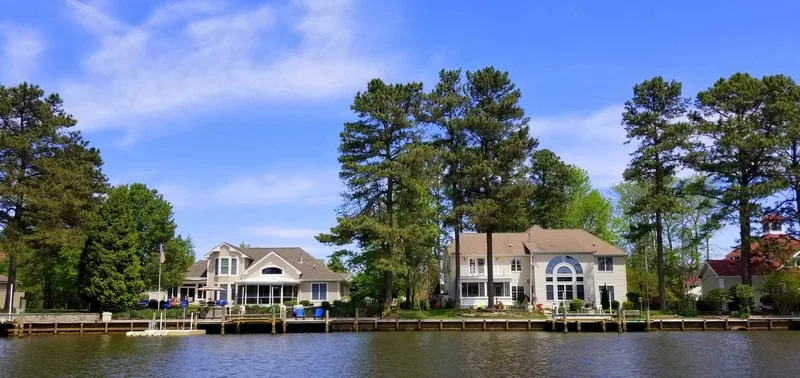Buying a waterfront home is a dream many aspire to, but the path to making this dream a reality involves careful planning and informed decision-making. Waterfront properties offer a unique lifestyle with serene views and direct access to water activities.

However, the buying process can be complex, with considerations that go beyond those of a typical home purchase.
Regardless of your specific desires in a waterfront property, this guide aims to assist:
Before diving into the market and exploring areas like Sandbridge, Virginia Beach, take a moment to reflect on why you want a waterfront property. Understanding your needs is the cornerstone of a successful waterfront home purchase. Beyond beautiful views, it’s about how the property fits into your lifestyle and long-term goals. Consider the following to clarify your requirements:
By thoroughly evaluating these aspects, you’ll be better equipped to find a waterfront home that meets your desires and enhances your quality of life.
With a clear understanding of what you’re looking for in your dream home, it’s crucial to research the market thoroughly. Prices for waterfront properties vary widely, influenced by location and amenities.
For a comprehensive view, consult with local real estate agents who specialize in waterfront properties. They can offer insights into pricing, availability, and market trends specific to waterfront living.
Additionally, explore online real estate listings with a focus on waterfront homes to know more about the market. This targeted research will prepare you to make an informed decision.
The old adage ‘location, location, location’ holds especially true for waterfront homes. Beyond the view, consider factors such as proximity to necessities, the community vibe, and potential environmental risks like flooding. The perfect spot balances your desires for privacy and convenience with safety and sustainability.
A waterfront home requires a more thorough inspection than a standard home to ensure its resilience and safety. It’s crucial to look beyond the home’s aesthetics and conduct specific assessments for flood risk and the potential damage from saltwater corrosion. This includes evaluating the condition of seawalls, docks, and any signs of moisture-related wear on the property’s structure.
Hiring a professional inspector experienced in waterfront properties is essential. They can provide a detailed evaluation of these risks, uncovering potential issues that are not immediately apparent. Such an inspection will help you understand the long-term maintenance needs and potential investments required to protect your home from water-related damage.
Waterfront properties are often subject to a slew of regulations, including building restrictions, dock permits, and water usage rights. Familiarize yourself with these rules early on. This knowledge can prevent surprises down the line and ensure your waterfront lifestyle is both legal and enjoyable.
Securing financing for a waterfront home can sometimes be a hurdle, as lenders may view these properties as higher risk. It’s wise to get pre-approved early and explore various financing options. Comparing rates and terms from different lenders can save you a significant amount of money in the long run.
Owning a waterfront home comes with its own set of additional costs, from higher insurance premiums to maintenance for docks and seawalls. Budgeting for these expenses upfront will help you assess the total cost of ownership and avoid financial strain later.
With all the research and preparation in hand, you’re ready to negotiate your purchase. A good negotiation strategy considers the property’s condition, market demand, and any additional costs identified during your research. Don’t shy away from negotiating for better terms—it’s an essential step in getting the best value for your investment.
As you approach the finish line, ensure all the necessary paperwork and legal checks are in order. This includes title searches to confirm there are no liens against the property and obtaining the right insurance coverage. A smooth closing process paves the way for you to start enjoying your new waterfront lifestyle.
Buying a waterfront home is an exciting journey that requires careful consideration and preparation. By understanding your needs, researching the market, and paying close attention to the specifics of waterfront properties, you can make informed decisions that lead to a successful purchase. Welcome to your dream waterfront home, where every day feels like a vacation.